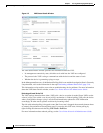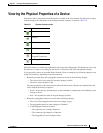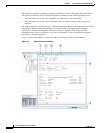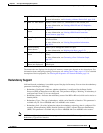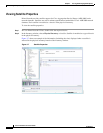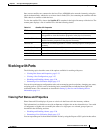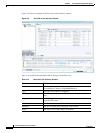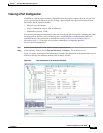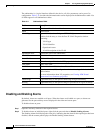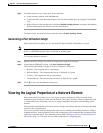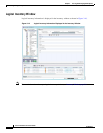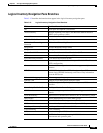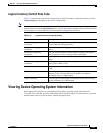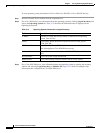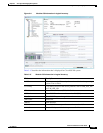
3-26
Cisco Prime Network 4.0 User Guide
OL-29343-01
Chapter 3 Viewing and Managing NE Properties
Working with Ports
The subinterface is a logical interface defined in the device; all of its parameters can be part of its
configuration. Table 3-11 describes the information that can be displayed in the Subinterfaces table. Not
all fields appear in all Subinterfaces tables.
Disabling and Enabling Alarms
By default, alarms are enabled on all ports. When the alarms are disabled on a port, no alarms are
generated for the port and they are not displayed in the ticket and events pane.
To disable alarms on ports:
Step 1 Open the inventory window for the required device.
Step 2 To disable alarms on individual ports, right-click the port and choose Disable Sending Alarms.
The Sending Alarms field displays the value false, indicating that the alarm for the required port has been
disabled, and the content pane displays the Enable Sending Alarms button.
Table 3-11 Subinterfaces Table
Field Description
Address IP address defined in the subinterface.
Mask Subnet mask.
VLAN Type Type of VLAN, such as Bridge or IEEE 802.1Q.
Double-click the entry to view the Port IP VLAN Properties window
containing:
• VLAN type
• VLAN identifier
• Operational status
• A brief description of the VLAN
Operational State Operational state of the subinterface.
VLAN ID VLAN identifier.
Inner VLAN CE-VLAN identifier.
IP Interface IP interface, hyperlinked to the VRF properties in the inventory window.
VRF Name Name of the VRF.
Is MPLS Whether this is an MPLS interface: True or False.
VC Virtual connection (VC) configured on the interface, hyperlinked to the VC
Table window.
For more information about VC properties, see Viewing ATM Virtual
Connection Cross-Connects, page 20-6.
Tunnel Edge Hyperlinked entry to the specific tunnel edge in logical inventory.
Binding Hyperlinked entry to the specific bridge or pseudowire in logical inventory.



